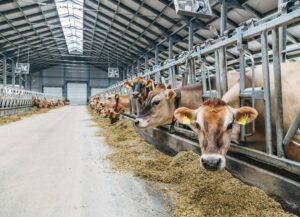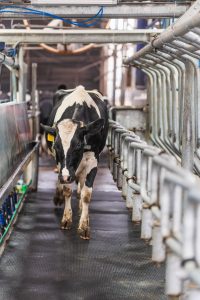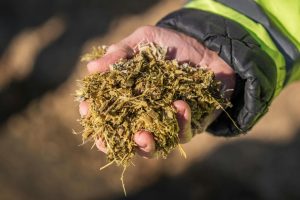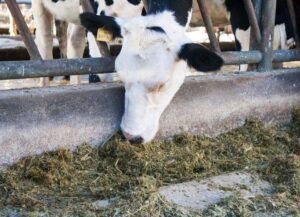Alvaro Garcia
The fate of nitrogen (N) ingested by dairy cows is approximately 34% in milk protein synthesis, 34% eliminated in the urine, 27% in the feces, with only 5% retained to be used in other body processes. These figures show that close to 60% of the nitrogen intake ends up being a source of environmental N load.
Not only is N tied-up in urine and feces but it also results in gaseous N losses through nitrous oxide which is also a greenhouse gas nearly 300-fold more potent than carbon dioxide. Ammonia gas production is also of concern since it is hazardous both for humans and livestock. As a result, improving N partitioning will have an effect in the environmental load associated with livestock production as well as air quality.
What is the effect of adding tannins to the silage on cow’s nitrogen metabolism?
Oak tannins applied to forage before baling it for silage improve protein partitioning in the cow lessening the environmental N load. Research has shown that adding tannins to forages before ensiling can lead to a reduction in ammonia production. Tannins have also been used to protect fermentable protein from rumen degradation which is later digested once it is freed from the tannin complex once it reaches the more acidic pH of the abomasum. This latter effect results in less plasma urea N, less milk urea N, and reduced N excretion in the urine.
A recent experiment in Belgium (Herremans et al. 2020) assessed the effects of an oak tannin extract on silage preservation and N partitioning once fed to dairy cows. The forage evaluated was a third-cut mature cocksfoot stand (Dactylis glomerata), white clover (Trifolium repens) and red clover (Trifolium pratense). Forage was baled with a conventional square baler equipped with a front sprayer. Treatments were as follows:
- Half of the windrows sprayed with just water (control)
- Half sprayed with a tannin extract solubilized in water (468 ± 6 g/kg DM of total tannins, with 5.4 g/kg DM of condensed tannins)
Lactating Holstein cows were assigned to a cross-over experiment with two treatments and two periods. Diets contained 50% silage and were formulated to fulfill 100% of the energy requirements but only 92% of the true protein digestible in the small intestine. This was done to corroborate if milk production would increase once tannins supplied more digestible protein to the small intestine.
As previous research has demonstrated tannins applied to forage before ensiling tended to decrease proteolysis and as a result silage ammonia concentration. In this experiment cows that received the treated silage did not use the dietary N to produce milk more efficiently compared to the controls. Milk and rumen fatty acids profiles however were impacted by tannin treatment of forage which suggests a modification in rumen microbial populations.
More nitrogen in faeces, less in urine
Although there were no effects of the tannin-treated forage on milk production, there was a slight reduction in N apparent digestibility which resulted in a slightly higher fecal N output (5%). There was however a decrease in urine N (−8% of N intake compared to controls) that compensated for the fecal N increase. This N shift from urine to feces reduces N gaseous emissions and thus positively impacts air quality. These results suggest this strategy can be used to reduce the environmental N load of livestock production.
Reference:
Herremans, S., Decruyenaere, V., Cantalapiedra-Hijar, G., Beckers, Y., Froidmont, E. 2020. Effects of hydrolysable tannin-treated grass silage on milk yield and composition, nitrogen partitioning and nitrogen isotopic discrimination in lactating dairy cows. Animal. 1-9.
© 2020 Dairy Knowledge Center. All Rights Reserved.









